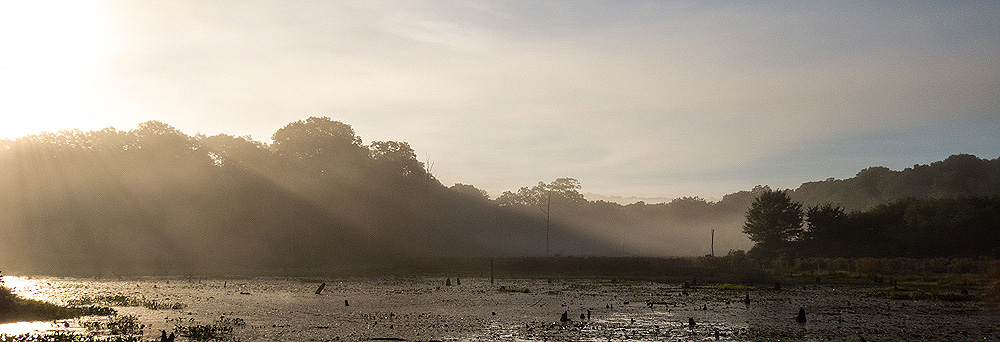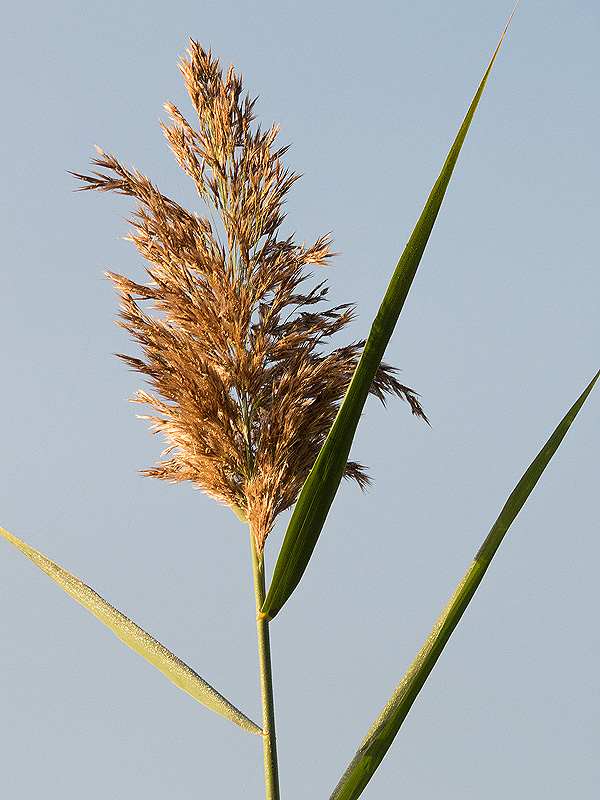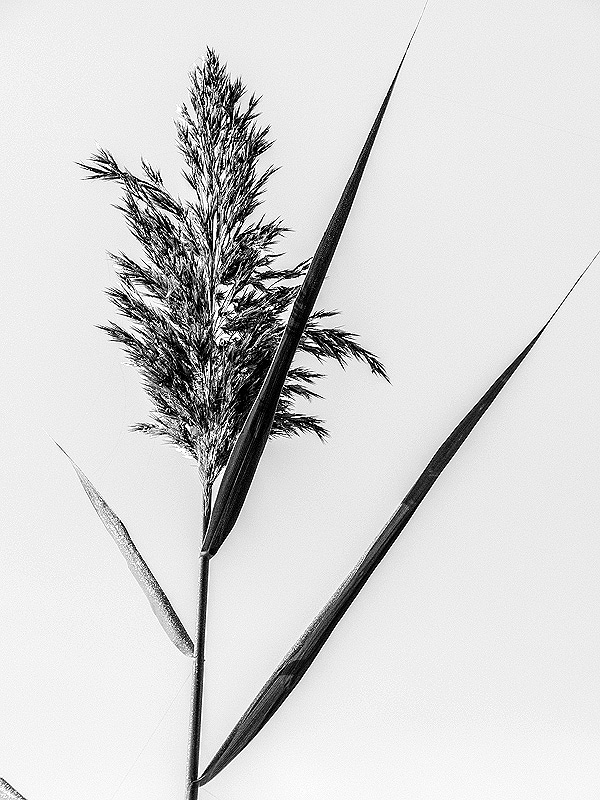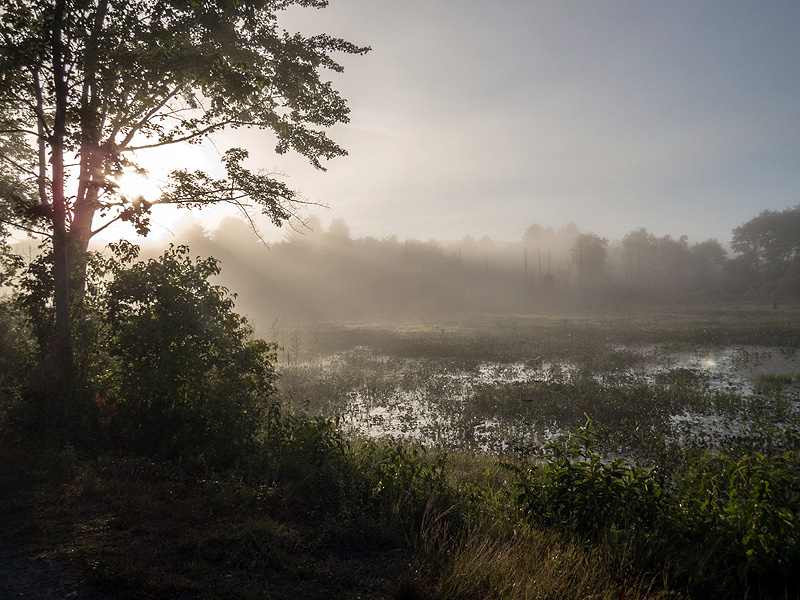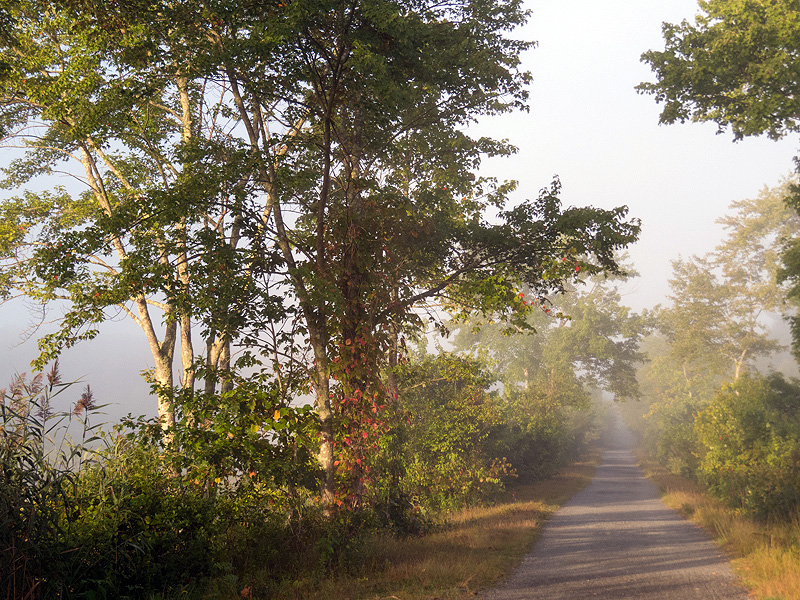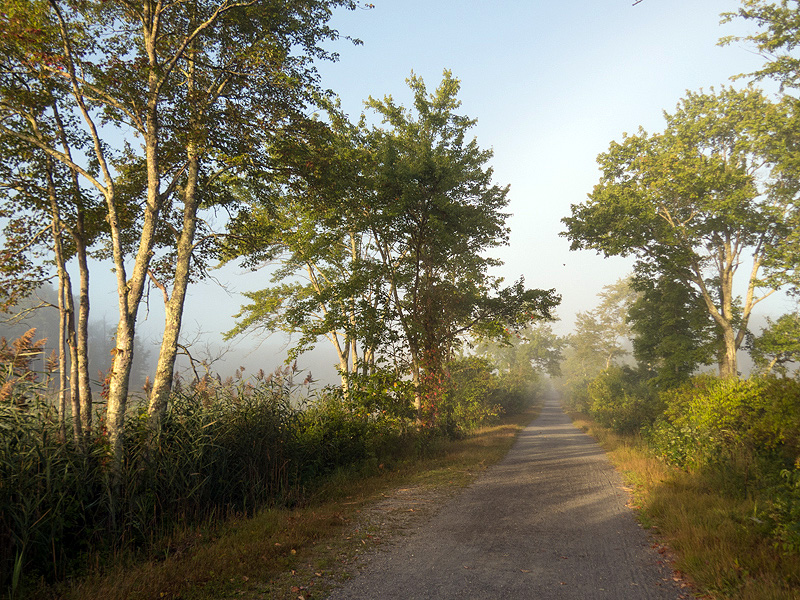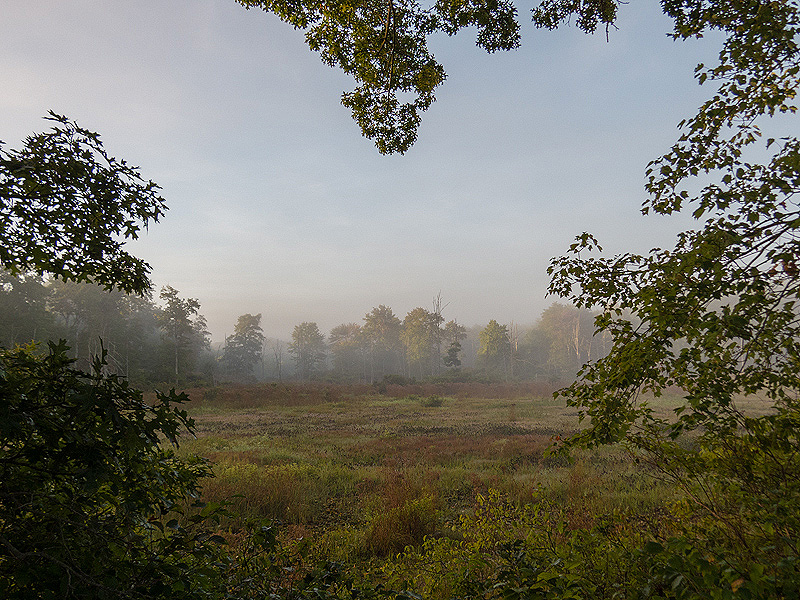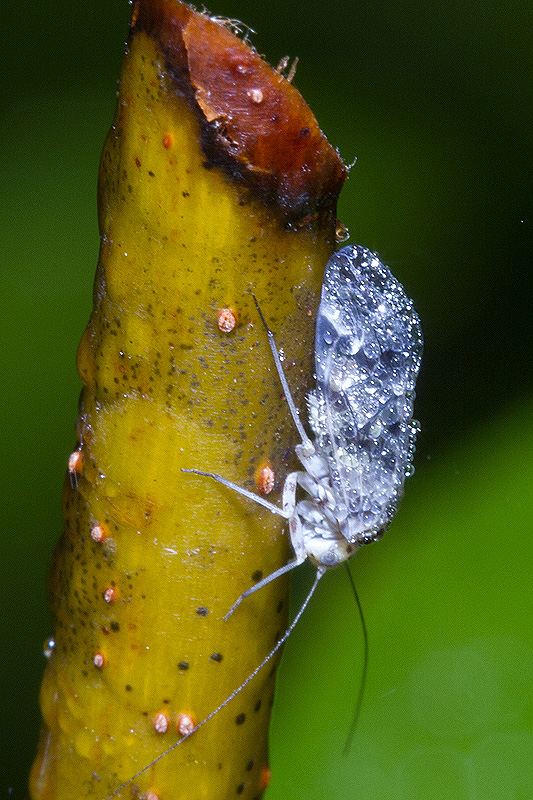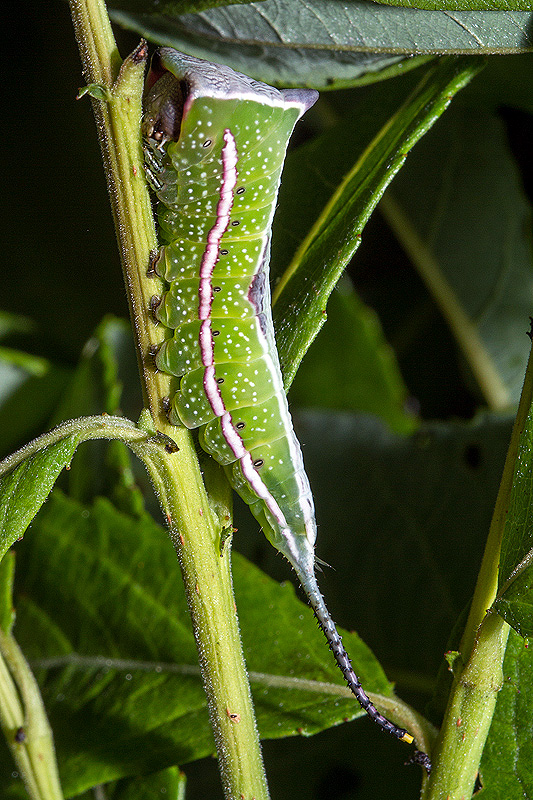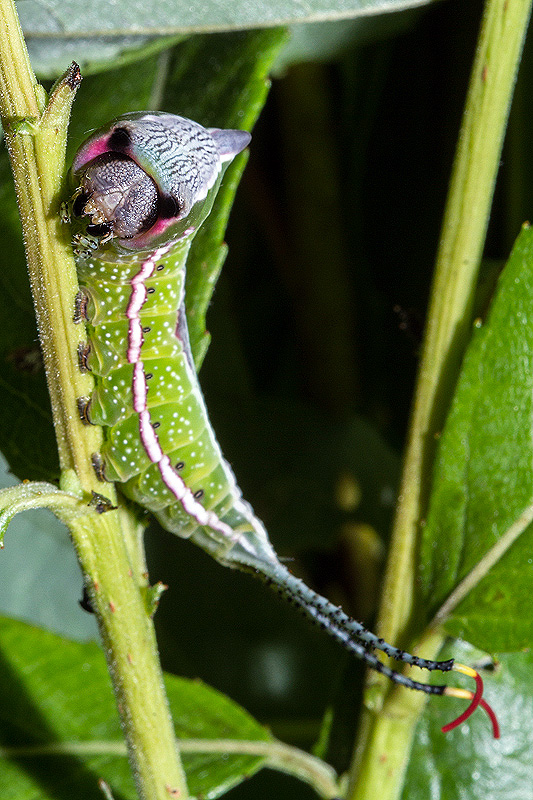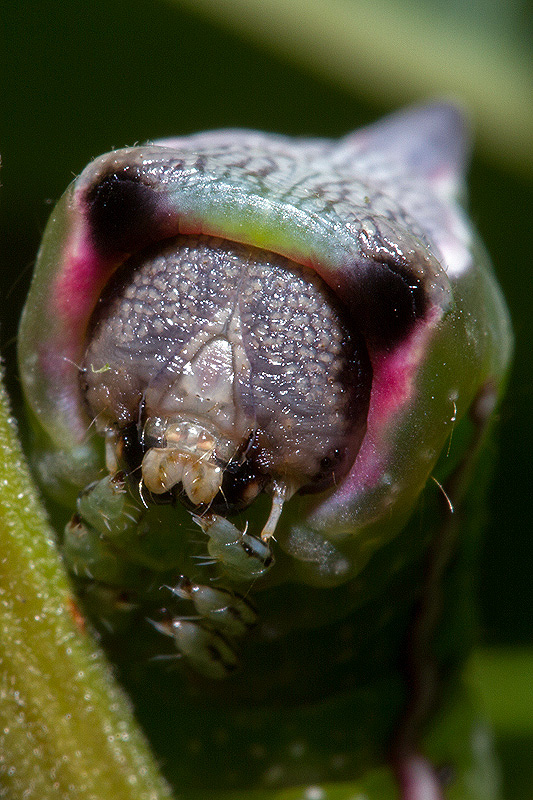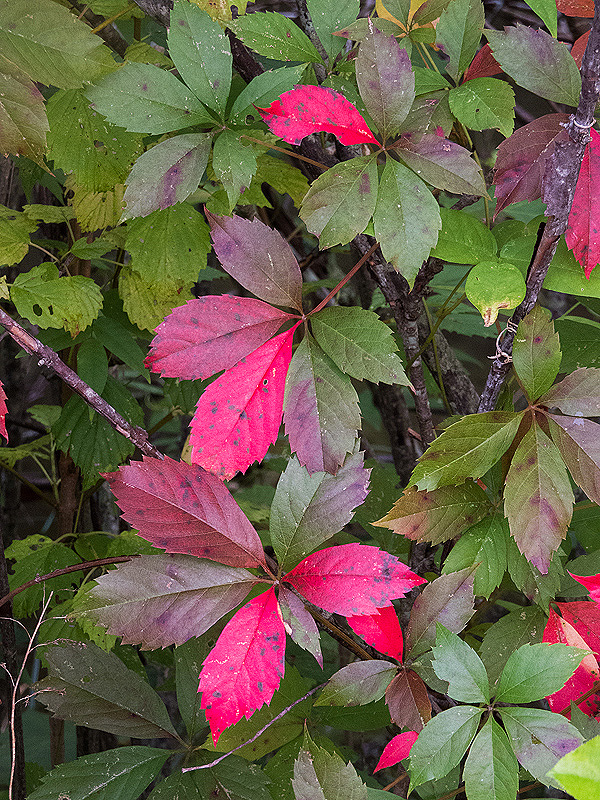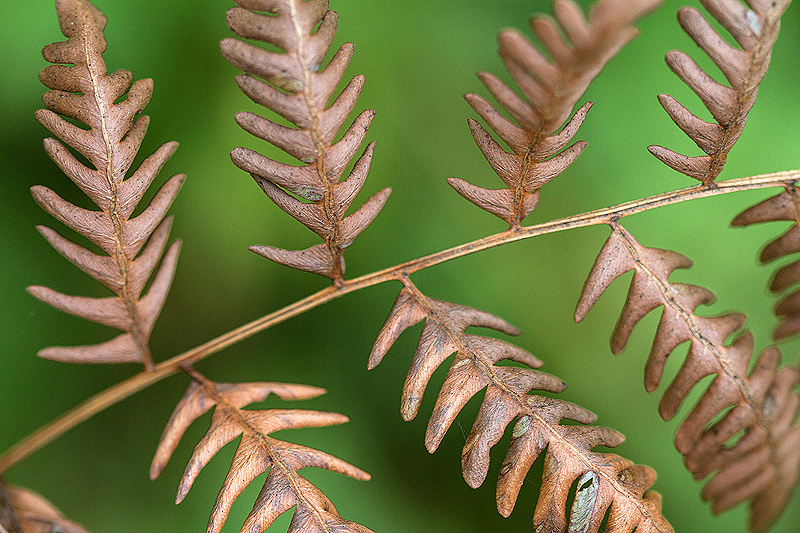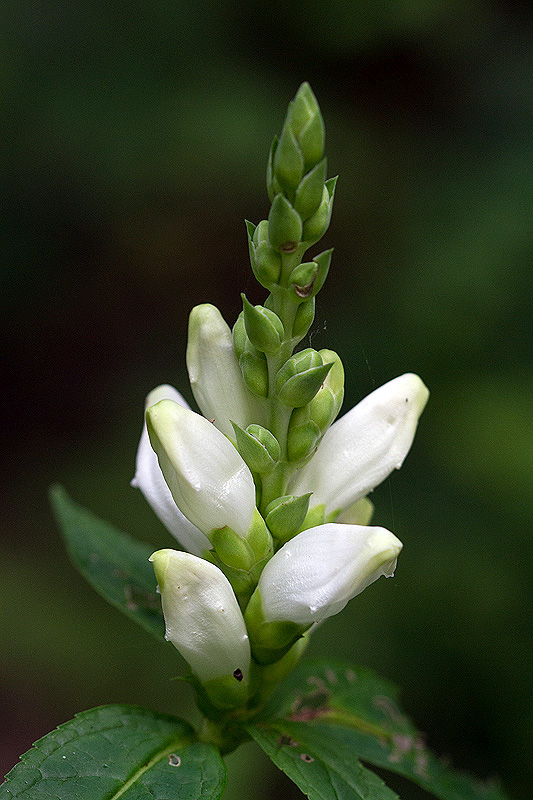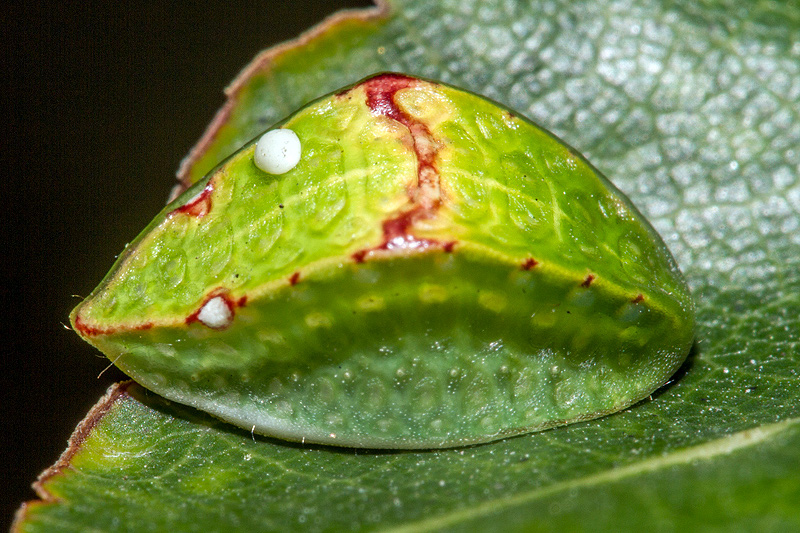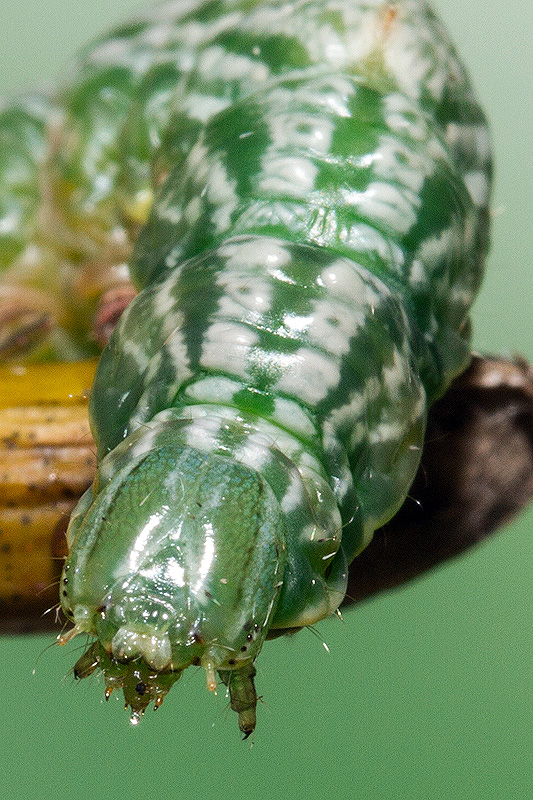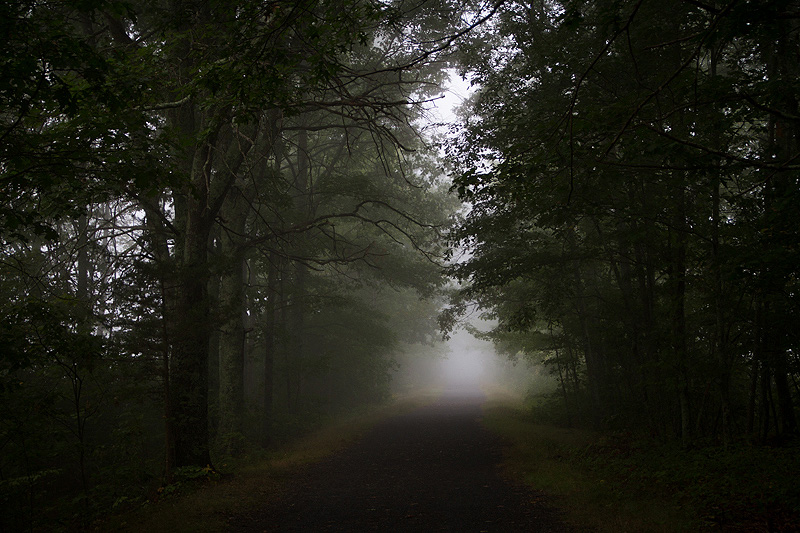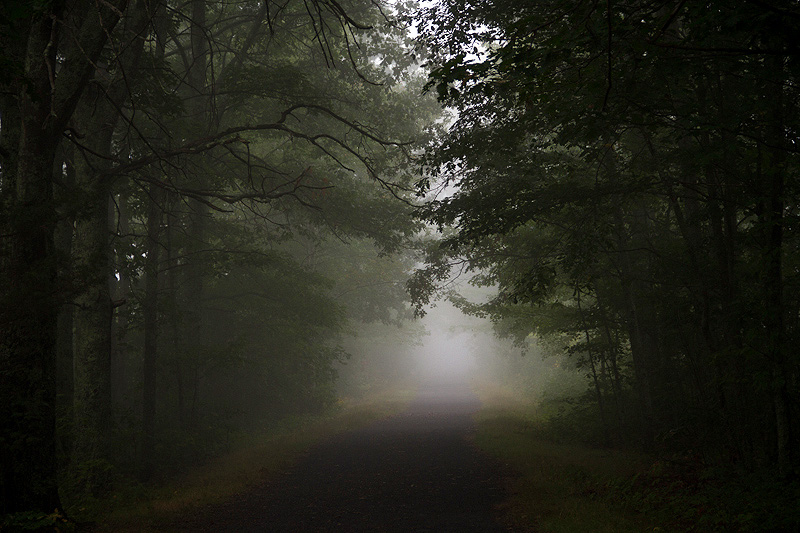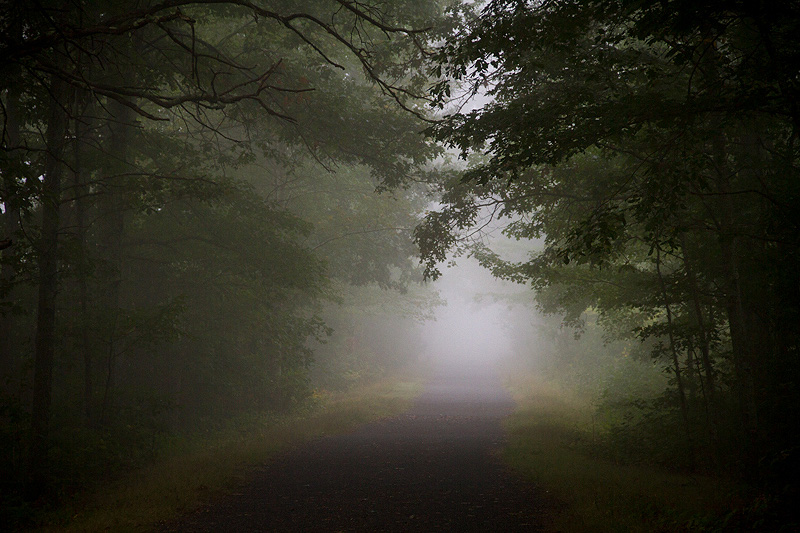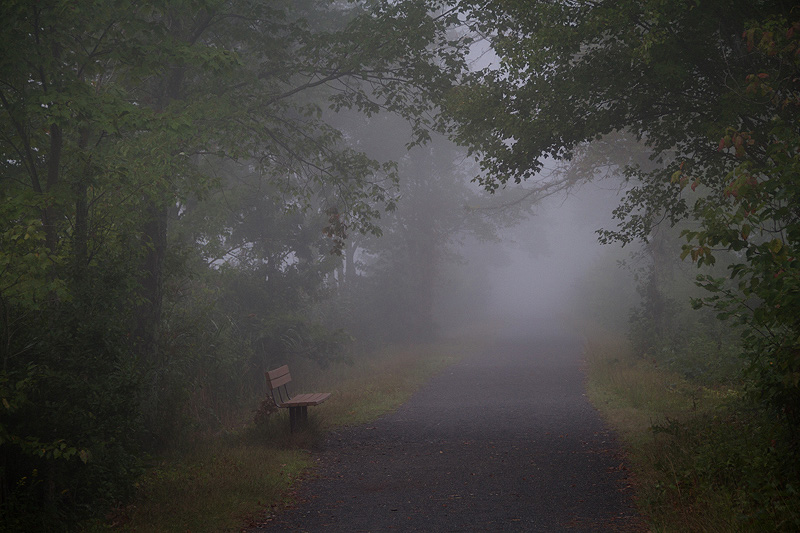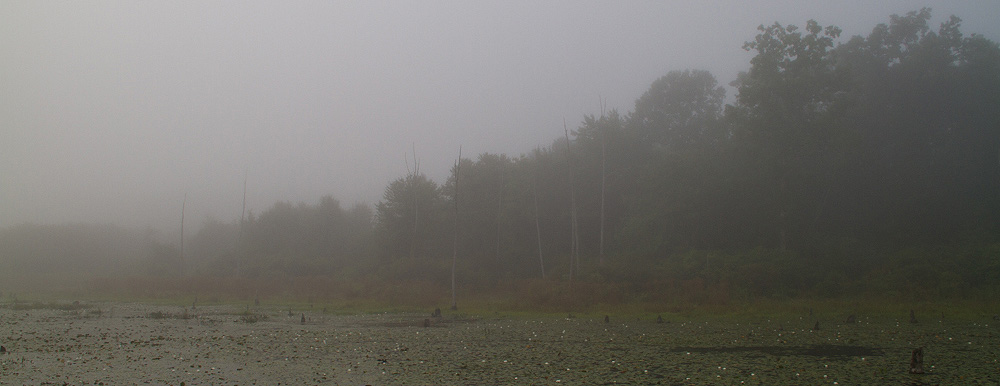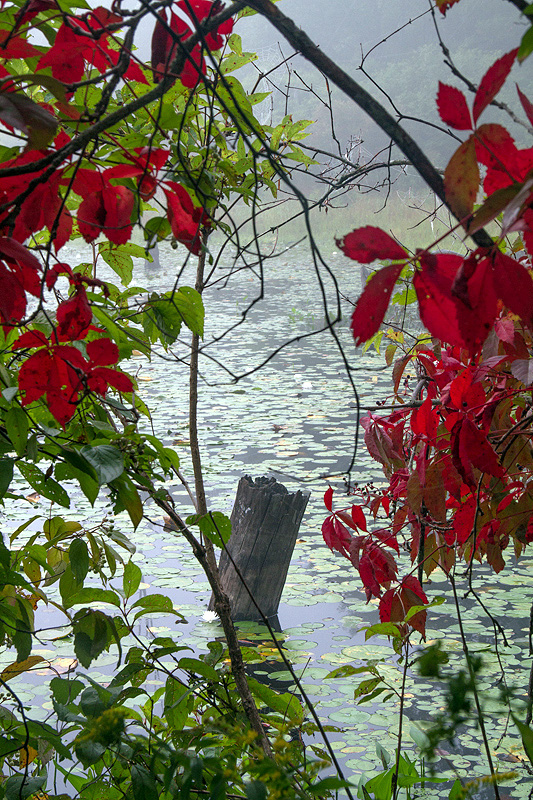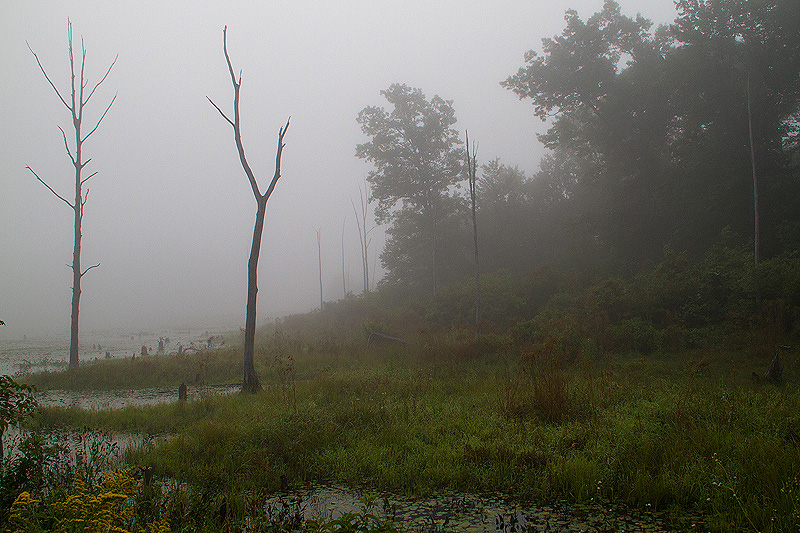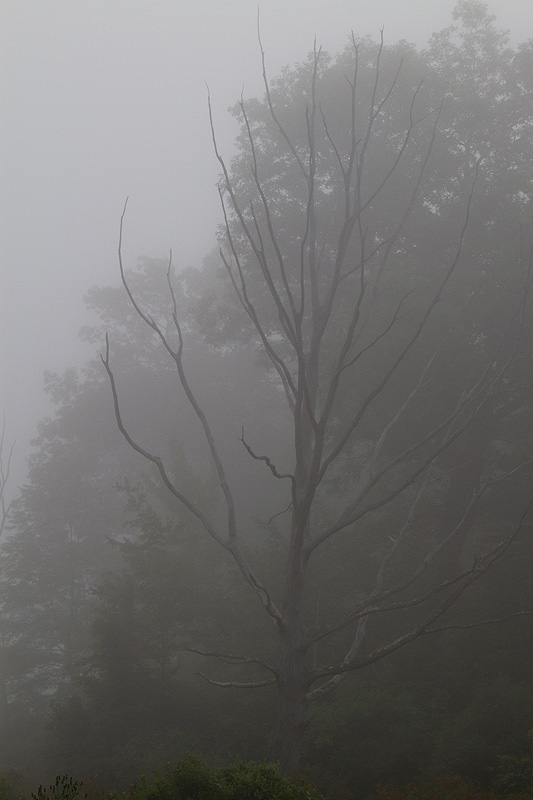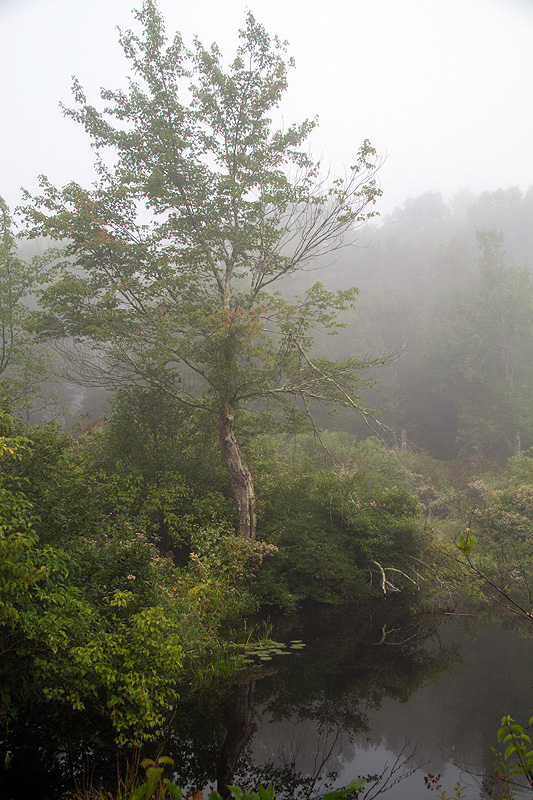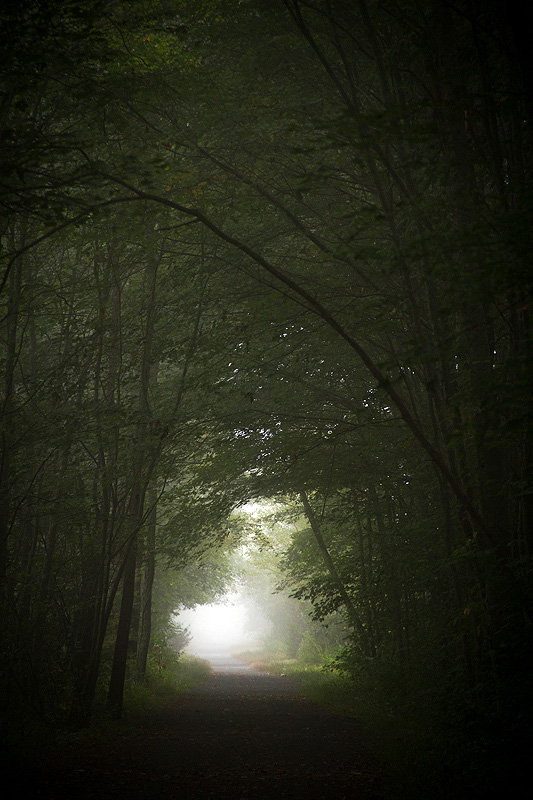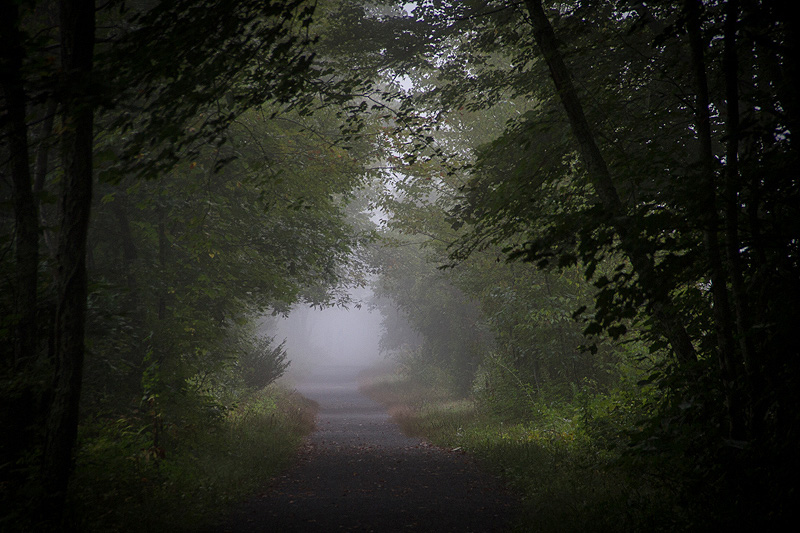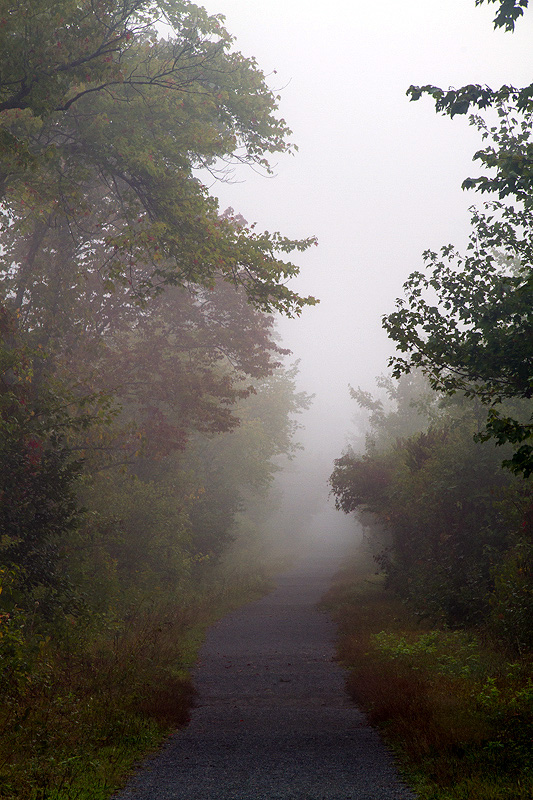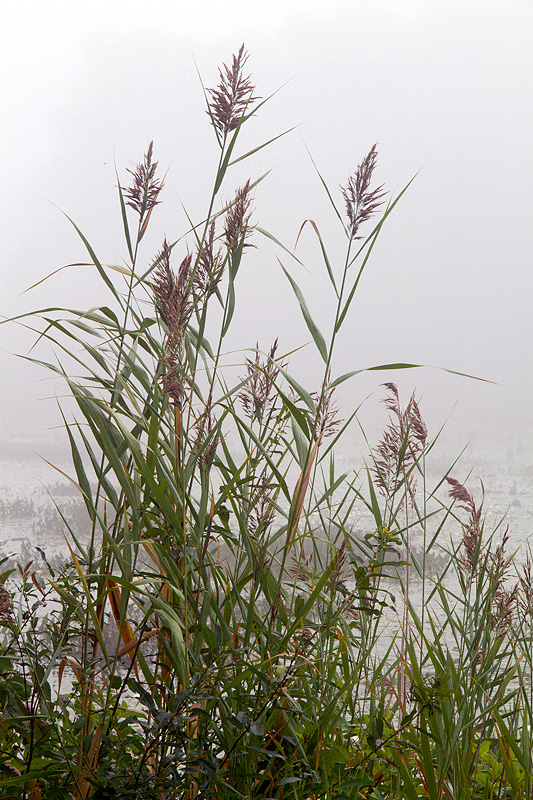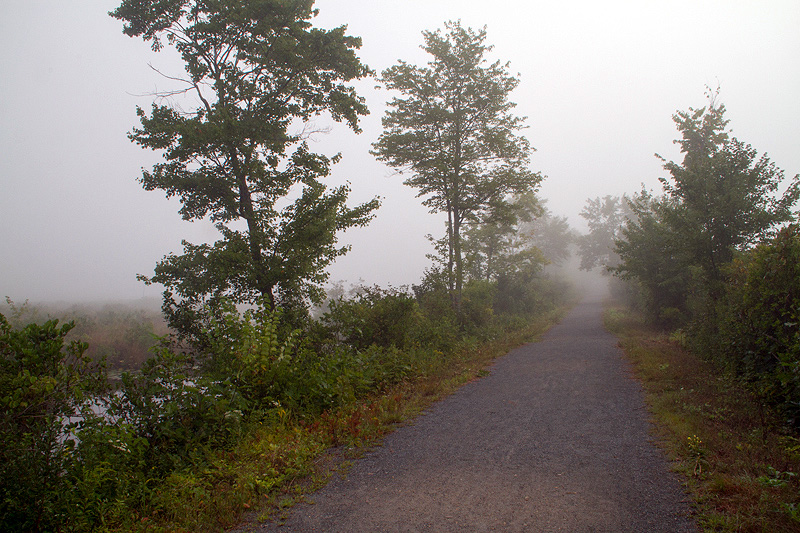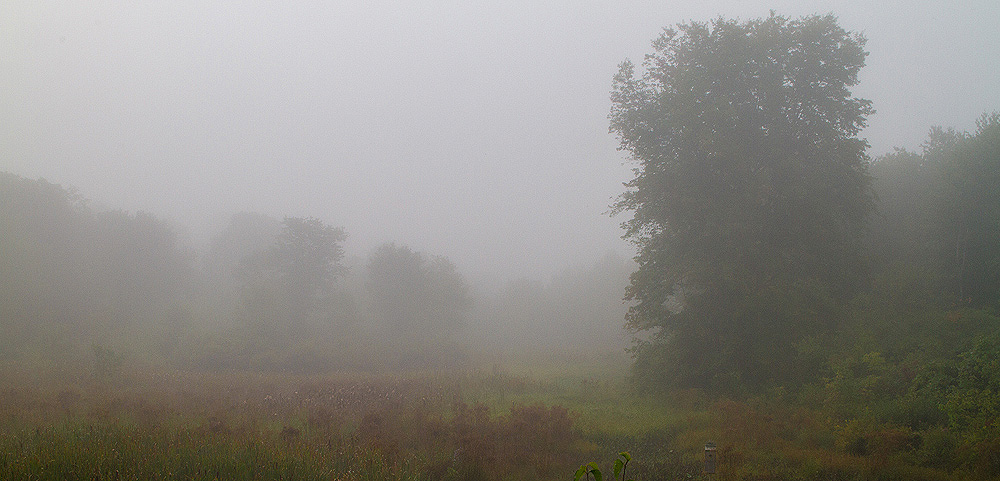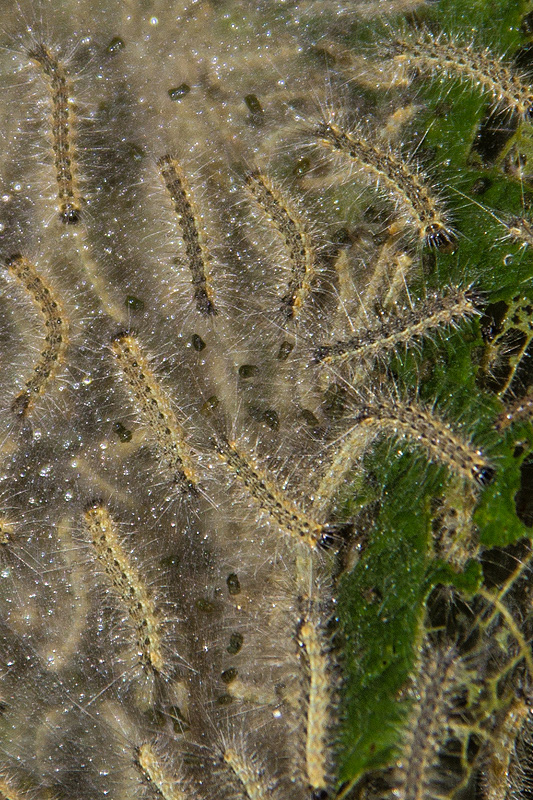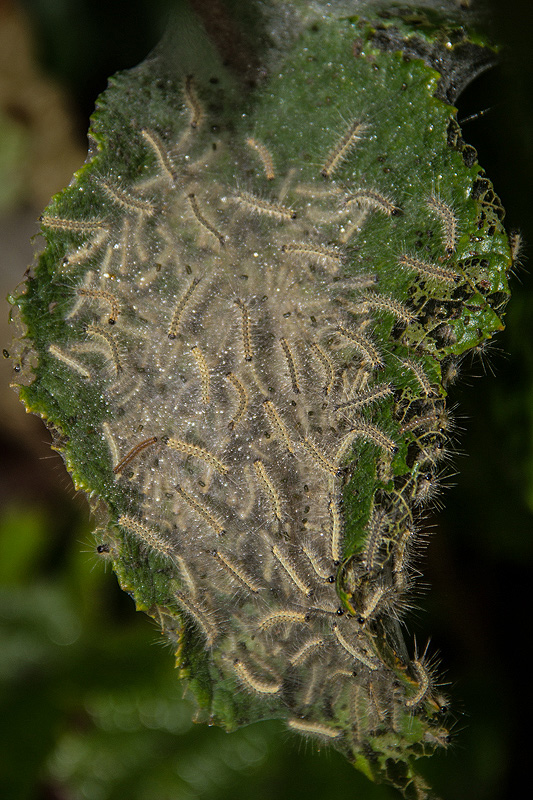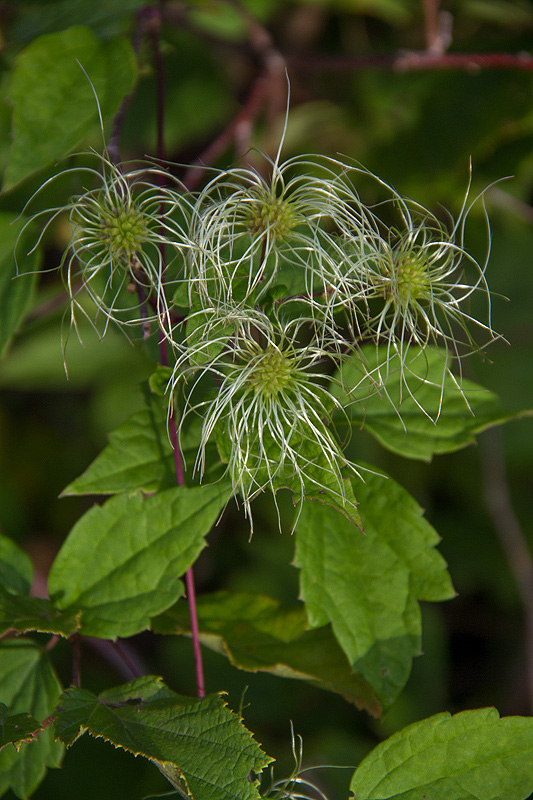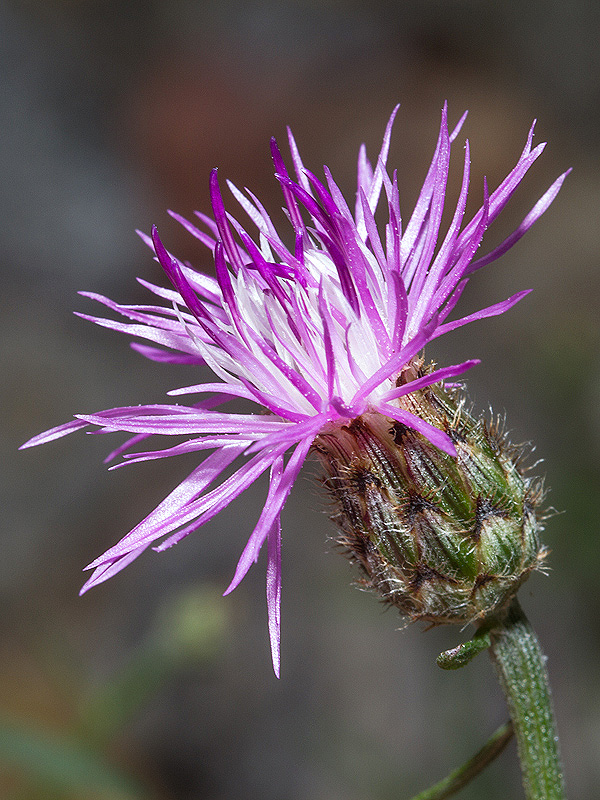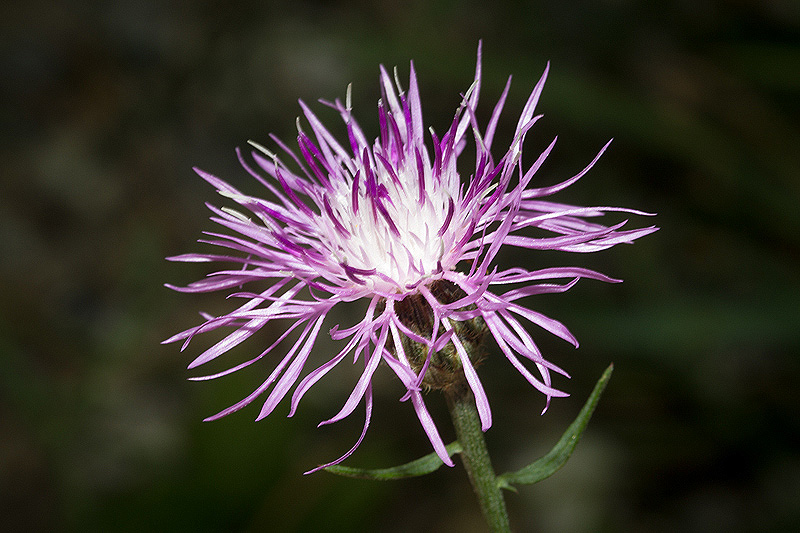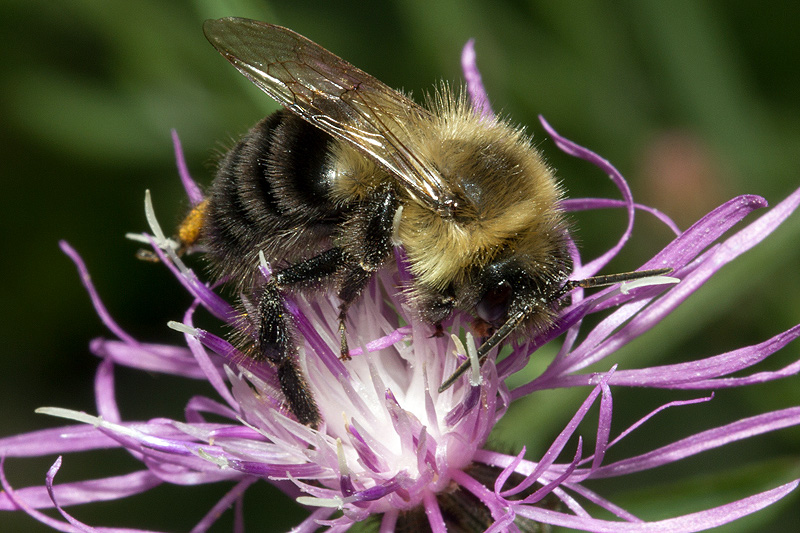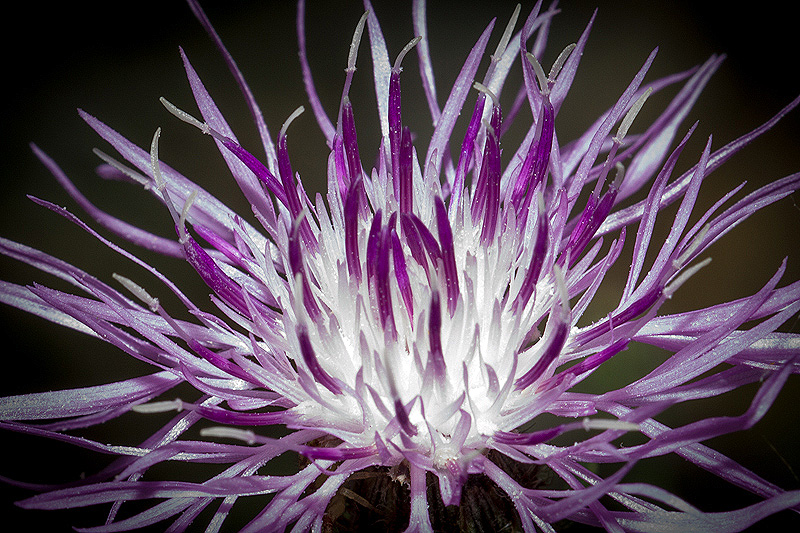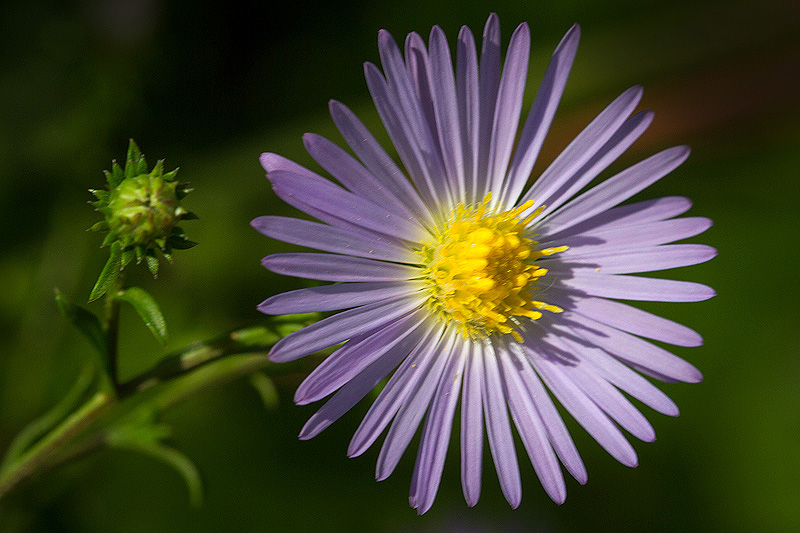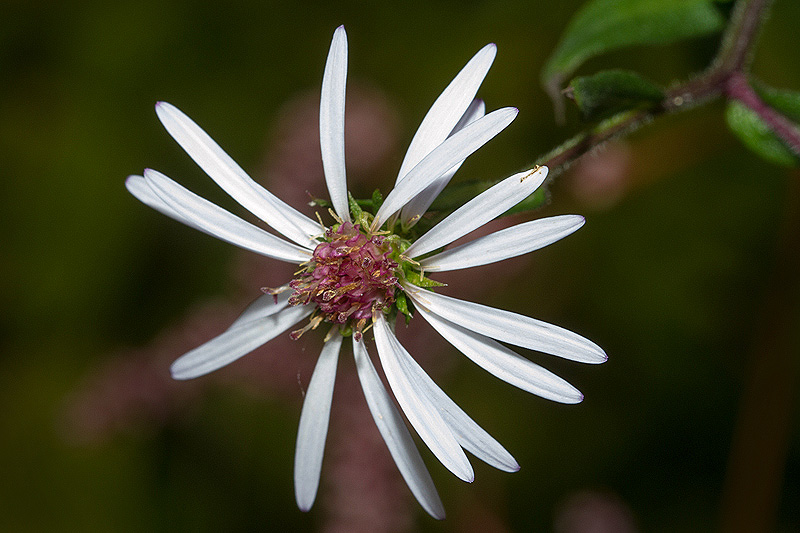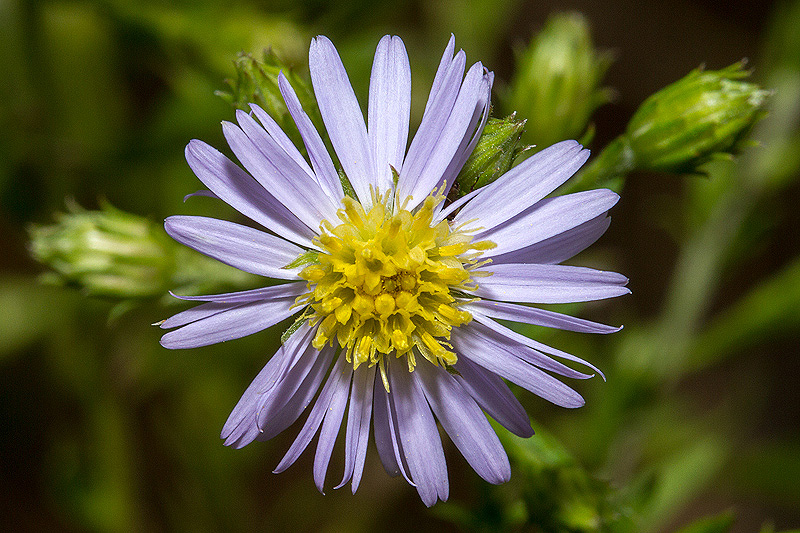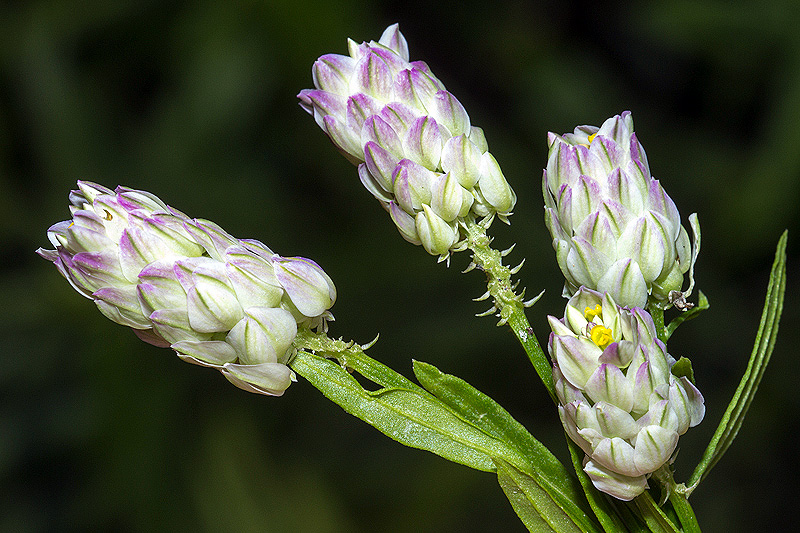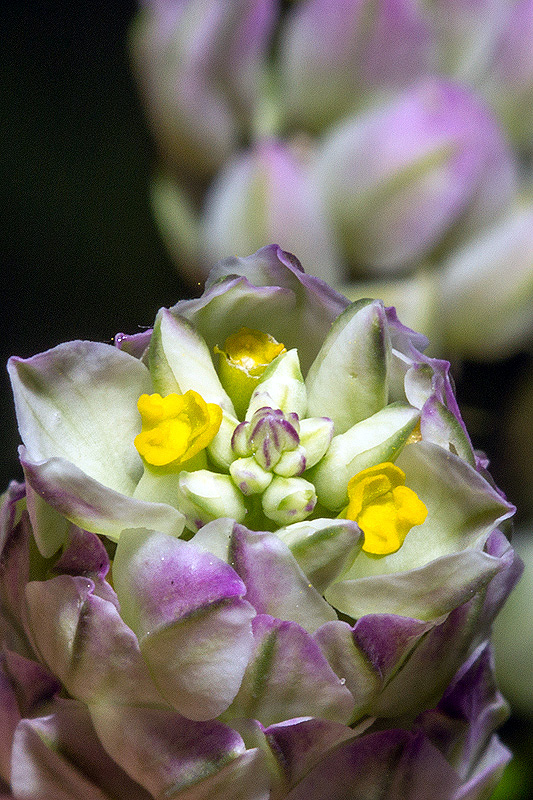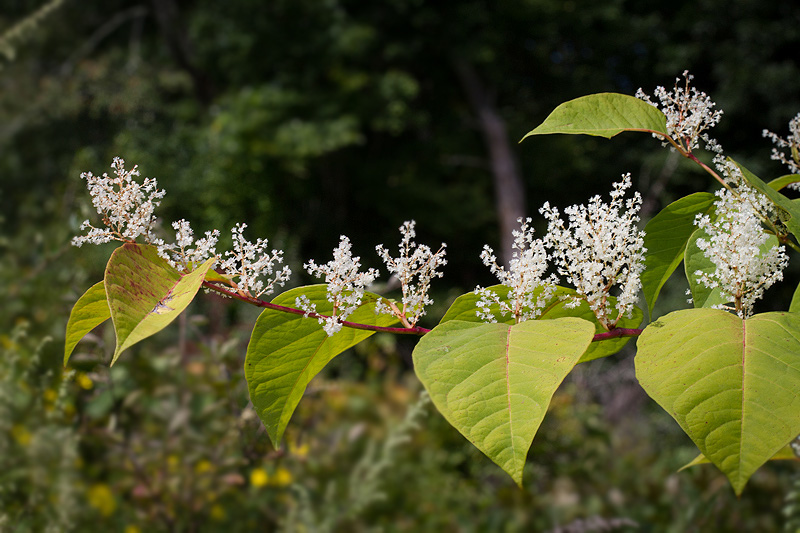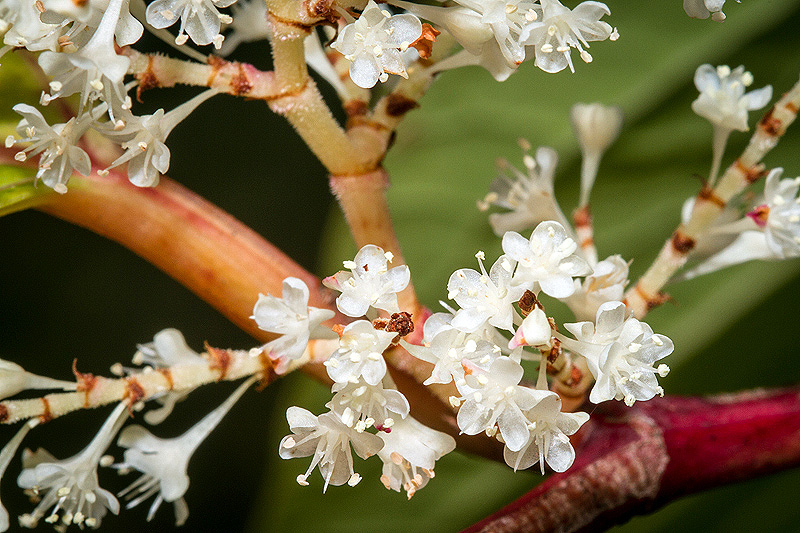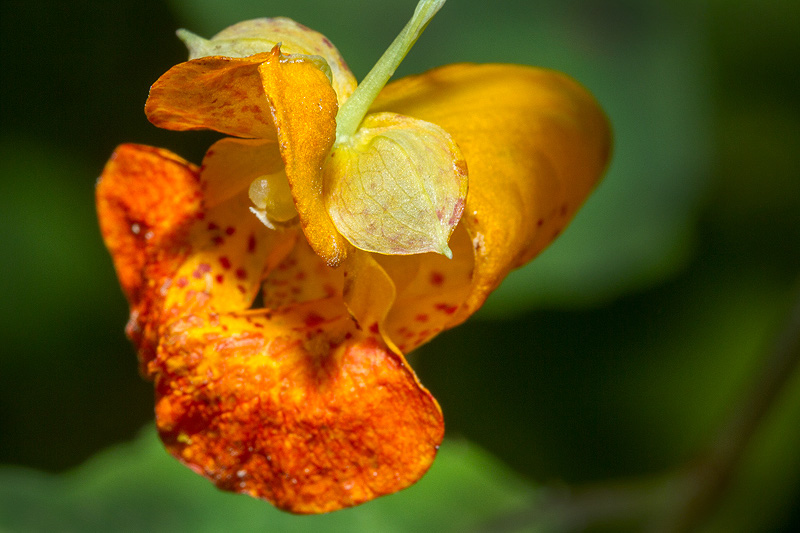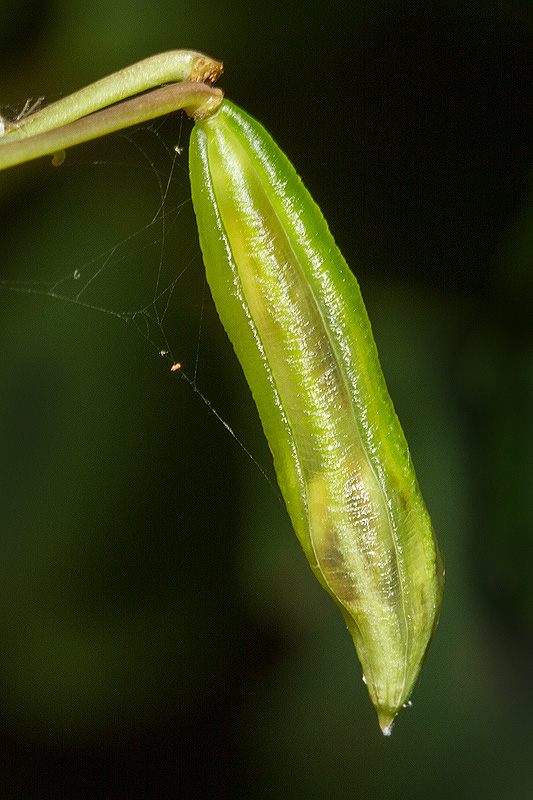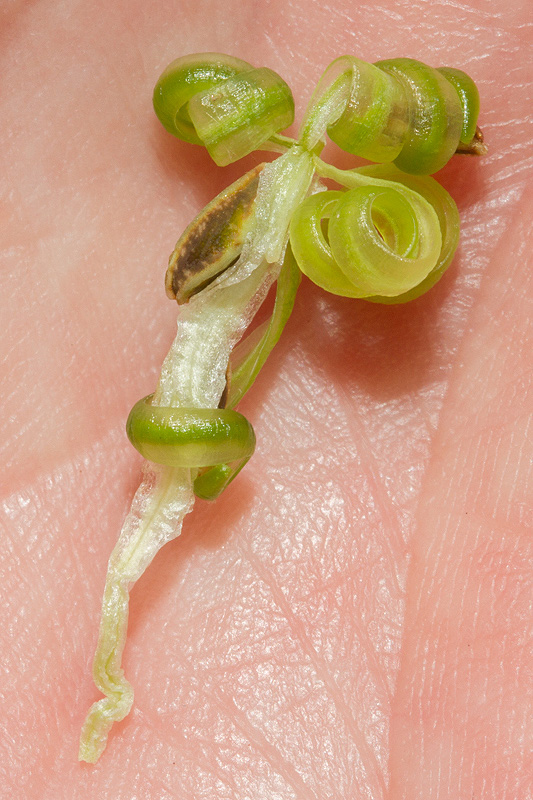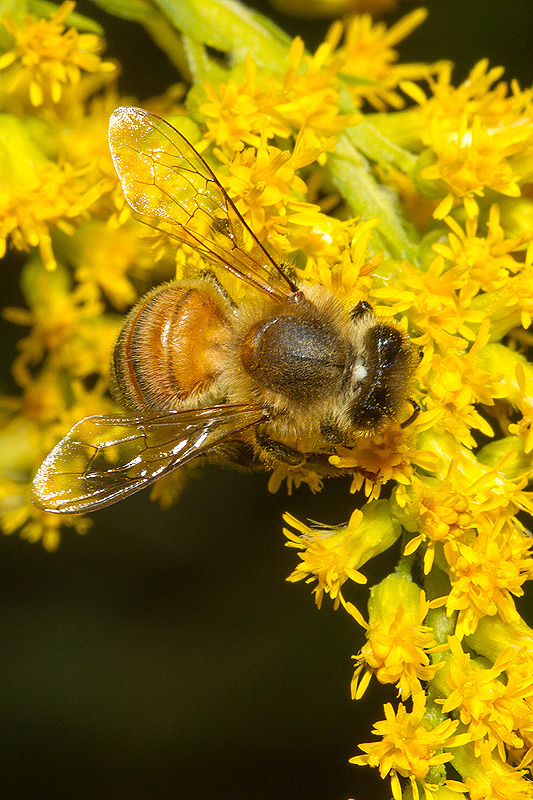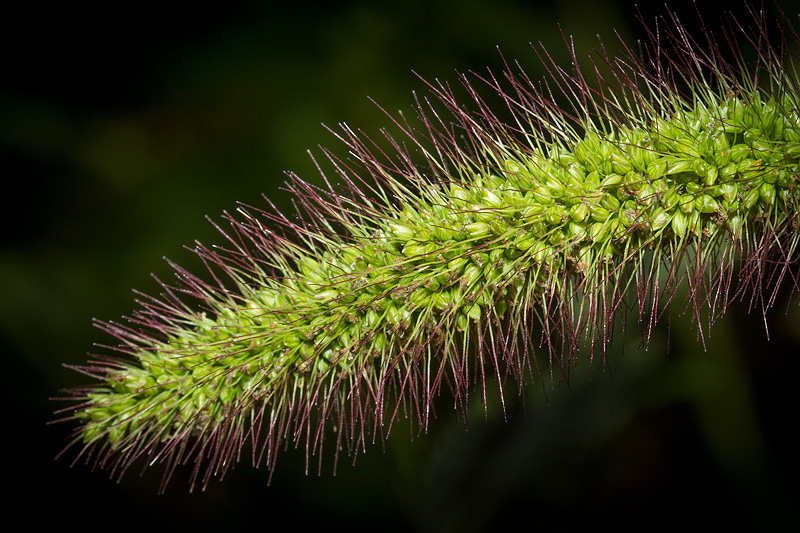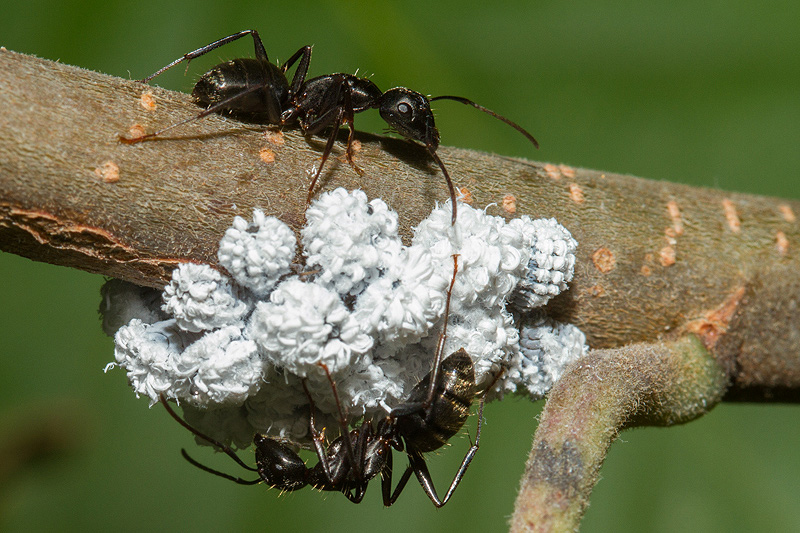Along the Air Line... 2014 - Summer, Part 8 The Air Line Trail in Eastern Connecticut - Stan Malcolm Photos |
mHome Page Stan's FlickR Albums |
August 30th. Fiftytwo degrees and a little foggy. |
|
|
|
|
|
|
A Barklouse (Order Psocoptera) covered with dew. |
The Black-etched Prominent (Cerura scitiscripta) caterpillars found on trail-side willow and pictured on previous pages are mature. |
When disturbed, they inflate the yellow and red tips of their highly modified anal prolegs... |
..and reveal a crimson prothoracic collar surrounding the head. |
August 31st. Virginia creeper (Parthenocissus quinquefolia) turns color long before other "Fall" foliage. |
Some ferns have browned off. |
A couple of Turtlehead plants (Chelone glabra) not far from Old Colchester Road. Flowers not quite open yet. |
A "slug" caterpillar of the Skiff Moth (Family Limacodidae; Prolimacodes badia). Slug caterpillars of this family lack developed prolegs and appear to undulate along much as a slug does. (See my video of a similar species.) The head is at the right in this photo, but hidden beneath the prothorax. Sadly, the white disk on its back is the egg of a parasitic fly. It has probably already hatched and invaded the caterpillar's tissues. The paired white spots behind the fly's egg are part of the caterpillars markings and are thought to sometimes prevent parasitism by mimicking fly eggs. The female fly tends not to lay additional eggs on a caterpillar that has already been parasitized, as it is unlikely that multiple parasitoids could develop in the caterpillar's small body. In this case, it obviously didn't work, perhaps because the caterpillar was too small for the mimicry to be realistic. Update: Dr. John Lill of George Washington University effectively scuttles this lovely "just so" explanation, having seen up to six fly eggs laid on a single Skiff Moth caterpillar. He does confirm though that only one parasitoid larva survives to maturity so some other method must exist to limit fly development. More images and information about this caterpillar on the next page. |
September 1st. Found wandering across the trail, I think this is a Double-toothed Prominent (Nerice bidentata) caterpillar. |
|
September 2nd. Seventyfour degrees and thick humidity haze at 7:00 AM. |
|
|
|
|
|
|
|
|
|
|
|
|
|
|
Fall Webworm (Hyphantria cunea) on oak. |
|
September 3rd. Virgin's Bower or Wild Clematis (Clematis virginiana) is displaying its distinctive seed heads. |
Wild Turkeys (Meleagris gallopavo) crossing Cook Hill Road at the trail in Lebanon this afternoon. |
Spotted Knapweed (Centaurea maculosa). |
|
|
|
Various late summer Asters are starting to bloom. |
|
|
Field Milkwort (Polygala sanguinea) still blooming. |
Ah ha! What I assumed were the flowers were only bracts. The actual flowers are tiny and yellow. |
Japanese Knotweed (Polygonum cuspidatum), an invasive plant that displaces native species. |
|
Spotted Touch-me-not or Jewelweed (Impatiens capensis). |
Seed pods "explode' at a light touch, sending seeds flying. |
After it pops, this is what remains. |
Honey bee (Apis mellifera) on Goldenrod. |
Foxtail Grass? |
Ants tending their herd of Wooly Alder Aphids (Paraprociphilus tessellates). |
